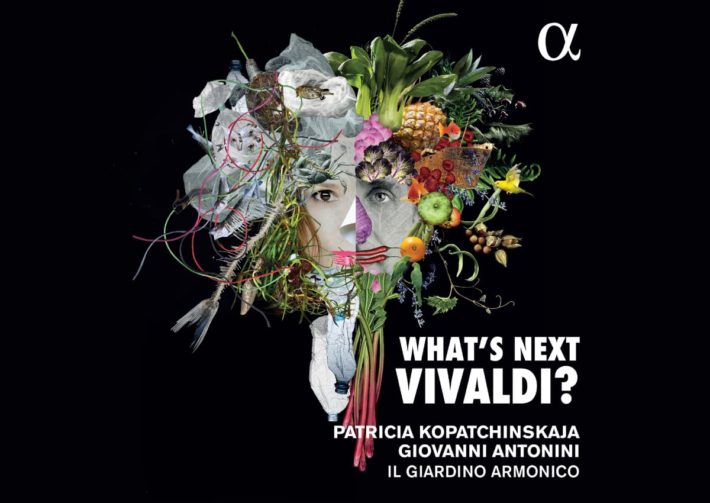Patricia Kopatchinskaja’s newest Alpha Classics release continues her recent spate of “concept” albums. This latest release includes five Vivaldi concerti: three for solo violin, the concerto for four violins (RV 550) and the G Minor String Concerto (RV 157). While the concertos are performed without the kind of commingling programs from the previous albums, a short work by a contemporary Italian composer is performed between each Concerto. The intent is to show a connecting thread between Vivaldi, the baroque concerto form, and contemporary music. It also offers the listener a new prism through which to hear and experience Vivaldi’s music.
Each of the concertos exults in technical showmanship and finely spun melodies. Kopatchinskaja and Il Giardino Armonico open with the “La tempesta di mare” Concerto (RV 253). Their performance has a wild abandon that makes even Fabio Biondi and Europa Galante seem tame by comparison. One is gripped by the music-making until 2’36,” where Kopatchinskaja suddenly interjects a cadenza inspired by “ghosts from Pirates of the Caribbean,” which then leads to a wind machine and percussive lightning strike to end the first movement. Similarly, the slow movement played with considerable freedom and rhapsodic emotion, ends with a brilliantly played but stylistically unconvincing final embellishment, followed by a rhythmically free yet impressive reading of the final movement.
Cattaneo’s “Estroso” follows, an undeniably fascinating exploration of shifting tonal colors. The connecting “thread” is certainly apparent, in this instance the technical virtuosity required from the soloist. The same holds true of Francesconi’s “Spiccato” (track 9), which features perhaps the most technically difficult writing, played with jaw-dropping brilliance and panache. Undoubtedly, many listeners will hear connecting “threads” between these five new works and Vivaldi’s concertos. Yet the new music inhabits a very different sound world, using fragmented melodic motives, pointillistic orchestral coloring and substantial dissonance. Do these works interspersed between the concertos bring the listener a deeper appreciation and understanding of Vivaldi?
Related Classical Music Reviews
- Review: Vivaldi, Piazzolla – Four Seasons – Arabella Steinbacher
- Review: Haydn – Complete Symphonies, Vol. 8, “La Roxolana” – Antonini
- Review: Bach – Violin Concertos – Debretzeni, Gardiner
Il Giardino Armonico’s performance of the G Minor concerto (RV 157) has verve and a refined sensibility that fully captures its shifting moods and emotions. The C Major concerto (RV 191) is performed without any interpretative quirks, allowing one to fully enjoy Kopatchinskaja’s inspired playing. In the “Concerto for 4 violins” (RV 550) Kopatchinskaja shows a disarming sensitivity, her playing never outshining her other colleagues. Frustratingly, the D Major Concerto “Il Grosso Mogul” brings more interventionist quirks (track 20, 2’27”), with the continuo suddenly seeming in need of a retune, followed by another cadenza that travels far beyond Baroque style.
It cannot be denied that Kopatchinskaja’s playing is riveting and will challenge any preconceptions about how this music should sound. Nevertheless, as someone who seeks to understand and appreciate most interpretative ideas, Kopatchinskaja and Antonini often go beyond what I can accept. Earlier recordings of this music by Fabio Biondi, Rachel Podger and Guiliano Carmignola are just as musically stimulating and more wholly convincing.

Vivaldi – Violin Concertos RV 253, 157, 191, 550, 208
Works by Cattaneo, Francesconi, Movio, Stroppa, Sollima, Bartók
Patricia Kopatchinskaja – Violin
Il Giardino Armonico
Giovanni Antonini – Conductor
Alpha Classics, CD 624
[the_ad_group id=”226″]
Read more classical music reviews or visit The Classic Review Amazon store
Follow Us and Comment:
Get our periodic classical music newsletter with our recent reviews, news and beginners guides.
We respect your privacy.









